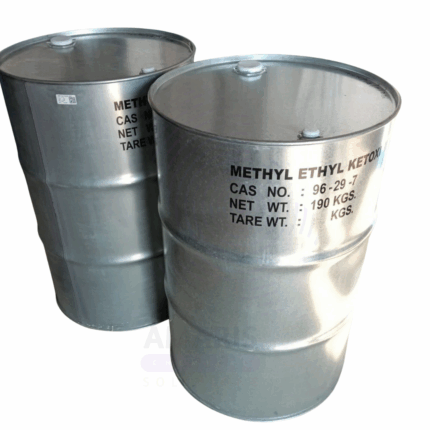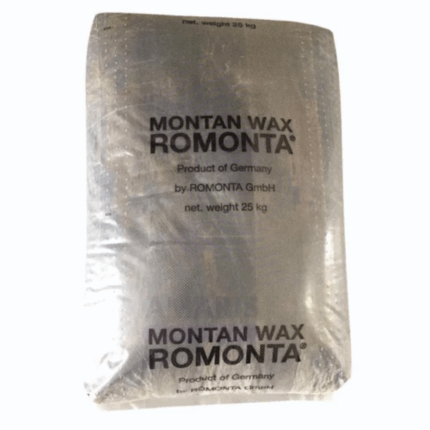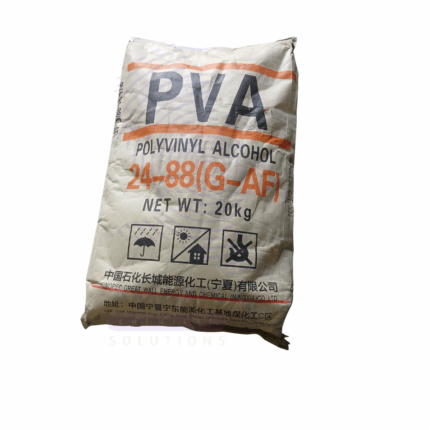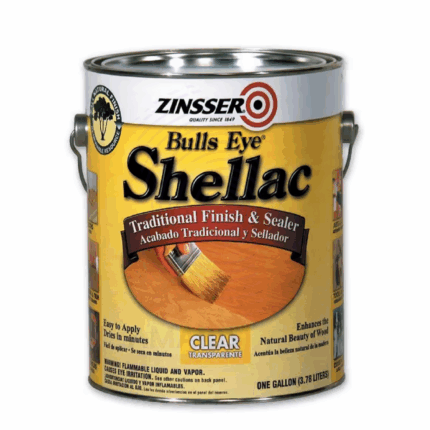Immersion Oil
Whatsapp Order
Immersion Oil is a high-purity, optically transparent oil used primarily in microscopy to enhance the resolution of high-power objectives. Applied between the microscope objective lens and the cover glass, immersion oil reduces light refraction and increases numerical aperture, allowing for clearer and more detailed imaging. It is colorless, non-drying, and has a refractive index closely matching that of glass (typically around 1.515).
This 50ml volume is ideal for laboratory, clinical, and educational settings where precision microscopy work is performed. Immersion oil is formulated to be chemically stable, non-drying, and safe for delicate optics when used correctly.
Description
Table of Contents
Toggle
Immersion Oil
Primary Uses
- Laboratory and Scientific Applications
- Used with high-magnification (usually 100x or higher) oil-immersion microscope objectives.
- Reduces light refraction between slide and objective lens for enhanced image clarity.
- Essential in biological, medical, and pathology labs for detailed cell and tissue visualization.
- Applied in educational institutions for advanced biological microscopy demonstrations.
- Common in industrial inspection of fine materials, electronics, or metallurgical specimens.
Secondary Uses
- Optical Equipment Maintenance
- Occasionally used in calibration or testing of optical systems where refractive index matching is required (under expert supervision).
KEY PRODUCT FEATURES
1. Basic Identification Attributes
- Common/Trade Name: Immersion Oil
- CAS Number: 8042-47-5 (for mineral-oil-based formulations)
- Refractive Index: ~1.515 at 23°C
- HS Code: 3824.99
- Synonyms: Microscopy Oil, Oil for Immersion Objectives
2. Physical & Chemical Properties
- Physical State: Clear, colorless liquid
- Odor: Odorless or very mild hydrocarbon scent
- Viscosity: Medium to high, depending on formulation
- Solubility: Insoluble in water
- Compatibility: Glass and most optical lenses (verify lens coating safety)
- Volatility: Low; non-drying
3. Safety & Hazard Attributes
- GHS Classification: Not classified as hazardous under normal use
- Toxicity: Low; not intended for ingestion or inhalation
- Allergen Information: No known allergens in standard formulations
- Flash Point: > 150°C (varies by formulation)
4. Storage & Handling Attributes
- Storage Conditions: Store tightly sealed in a cool, dry, dust-free place
- Container Type: Amber glass or opaque plastic to avoid UV degradation
- Shelf Life: 3–5 years under ideal storage conditions
- Handling Precautions: Avoid contamination and exposure to air when not in use
5. Regulatory & Compliance Attributes
- Complies with ISO standards for immersion microscopy
- Produced in ISO or GMP-certified facilities
- Non-reactive and safe for use with most optical instruments
- Not intended for food, pharmaceutical, or cosmetic use
6. Environmental & Health Impact
- Biodegradability: Partially biodegradable depending on formulation
- Ecotoxicity: Low when used and disposed of properly
- Bioaccumulation: Not expected in normal use scenarios
SAFETY HANDLING PRECAUTIONS
Safety Handling Precautions
- PPE Required: Gloves and lab coat recommended during prolonged handling
- Handling Guidelines: Use dropper or applicator; avoid spills on microscope parts
First Aid Measures
- Inhalation: Move to fresh air; unlikely to pose risk
- Skin Contact: Wash with soap and water if contact occurs
- Eye Contact: Rinse gently with clean water
- Ingestion: Seek medical attention; not meant for internal use
Firefighting Measures
- Fire Hazards: Slightly flammable at high temperatures
- Extinguishing Media: CO₂, dry chemical, or foam
- Special Precautions: Avoid using water jet directly on burning oil
- Hazardous Combustion Products: Carbon monoxide, carbon dioxide
Related products
Cade Crude 2 Oil
Cade Crude 2 Oil is a dark, viscous essential oil obtained through destructive distillation of the wood of the Juniperus oxycedrus tree (also known as prickly juniper). Known for its intense smoky, tar-like aroma and antiseptic qualities, this crude-grade cade oil is widely used in traditional skin remedies, veterinary care, and industrial cosmetic applications—especially in products aimed at treating chronic skin conditions such as psoriasis, eczema, and dandruff.
While not as refined as rectified Cade oil, Cade Crude 2 Oil retains a high concentration of phenols, cresols, and other active compounds that contribute to its strong antimicrobial, antifungal, and antipruritic effects. It is used cautiously in topical formulations at low dilution levels and is valued in rustic and smoky fragrance compositions.
Induction coil
An induction coil is an electrical transformer used to produce high-voltage pulses from a low-voltage direct current (DC) supply. It consists of two coils of wire—primary and secondary—wound around a common iron core. When current passes through the primary coil, it creates a magnetic field that induces a high voltage in the secondary coil. Induction coils are essential components in ignition systems, spark generation, and scientific experiments requiring high-voltage pulses.
Commonly used in automotive ignition systems, laboratory equipment, and electromagnetic experiments, induction coils enable the conversion of low voltage to the high voltage necessary to generate sparks or initiate other electrical discharges.
Methyl Ethyl Ketoxime
Methyl Ethyl Ketoxime is a clear, colorless to pale yellow liquid with a mild, characteristic odor. It is primarily used as a polymerization inhibitor and anti-skinning agent in coatings and paints, preventing premature curing during storage. MEKO is valued for its effectiveness in protecting alkyd and other resin-based coatings and enhancing shelf life.
Mineral Turpentine
Mineral Turpentine, also known as White Spirit or Stoddard Solvent, is a clear, petroleum-derived solvent widely used in industrial, commercial, and household applications. It is a mixture of aliphatic and alicyclic hydrocarbons obtained from the distillation of crude oil. Mineral Turpentine serves as an effective solvent for paints, varnishes, and adhesives and is valued for its moderate evaporation rate and good solvency power.
MonoPropylene Glycol ( MPG)
Mono Propylene Glycol (MPG) is a clear, colorless, odorless, and slightly viscous liquid commonly used as a solvent, humectant, and antifreeze agent. It exhibits excellent moisture retention, low volatility, and high boiling point, making it suitable for a wide range of industrial, food, pharmaceutical, and cosmetic applications. MPG is valued for its low toxicity and biodegradability.
Montan Wax
Montan Wax is a hard, brittle, natural fossil wax derived from lignite or brown coal deposits. It is composed primarily of long-chain fatty acids, esters, and hydrocarbons. Montan Wax is valued for its excellent lubricating, polishing, and emulsifying properties. It is widely used in various industrial applications including coatings, polishes, plastics, and as an additive in rubber and adhesives to improve surface finish and performance.
Polyvinyl Alcohol
Polyvinyl Alcohol is a synthetic, water-soluble polymer made by the hydrolysis of polyvinyl acetate. It is known for excellent film-forming, emulsifying, and adhesive properties. PVA is widely used across industries for applications requiring biodegradable, non-toxic, and flexible materials. It offers good chemical resistance, mechanical strength, and compatibility with other polymers and additives.
Shellac
Shellac is a natural resin secreted by the lac insect, primarily found in South Asia. It is processed into flakes or powder form and dissolved in alcohol to create a versatile film-forming agent. Shellac provides excellent adhesion, gloss, and moisture resistance, making it widely used as a wood finish, food glaze, and pharmaceutical coating. It is valued for its natural origin, biodegradability, and safe use in food and cosmetic applications.


 Preservatives(food)
Preservatives(food) Flavor Enhancers
Flavor Enhancers Acidulants
Acidulants Sweeteners
Sweeteners Antioxidants
Antioxidants Colorants(food)
Colorants(food) Nutraceutical Ingredients (food)
Nutraceutical Ingredients (food) Nutrient Supplements
Nutrient Supplements Emulsifiers
Emulsifiers
 Collectors
Collectors Dust Suppressants
Dust Suppressants Explosives and Blasting Agents
Explosives and Blasting Agents Flocculants and Coagulants
Flocculants and Coagulants Frothers
Frothers Leaching Agents
Leaching Agents pH Modifiers
pH Modifiers Precious Metal Extraction Agents
Precious Metal Extraction Agents
 Antioxidants(plastic)
Antioxidants(plastic) Colorants (Pigments, Dyes)
Colorants (Pigments, Dyes) Fillers and Reinforcements
Fillers and Reinforcements Flame Retardants
Flame Retardants Monomers
Monomers Plasticizers
Plasticizers Polymerization Initiators
Polymerization Initiators Stabilizers (UV, Heat)
Stabilizers (UV, Heat)
 Antifoaming Agents
Antifoaming Agents Chelating Agents
Chelating Agents Coagulants and Flocculants
Coagulants and Flocculants Corrosion Inhibitors
Corrosion Inhibitors Disinfectants and Biocides
Disinfectants and Biocides Oxidizing Agents
Oxidizing Agents pH Adjusters
pH Adjusters Scale Inhibitors( water)
Scale Inhibitors( water)
 Antioxidants(cosmetic)
Antioxidants(cosmetic) Emollients
Emollients Fragrances and Essential Oils
Fragrances and Essential Oils Humectants
Humectants Preservatives
Preservatives Surfactants(cosmetic)
Surfactants(cosmetic) Thickeners
Thickeners UV Filters
UV Filters
 Fertilizers
Fertilizers Soil Conditioners
Soil Conditioners Plant Growth Regulators
Plant Growth Regulators Animal Feed Additives
Animal Feed Additives Biostimulants
Biostimulants Pesticides (Herbicides, Insecticides, Fungicides)
Pesticides (Herbicides, Insecticides, Fungicides)
 Active Pharmaceutical Ingredients (APIs)
Active Pharmaceutical Ingredients (APIs) Excipients
Excipients Solvents(pharmaceutical)
Solvents(pharmaceutical) Antibiotics
Antibiotics Antiseptics and Disinfectants
Antiseptics and Disinfectants Vaccine Adjuvants
Vaccine Adjuvants Nutraceutical Ingredients (pharmaceutical)
Nutraceutical Ingredients (pharmaceutical) Analgesics & Antipyretics
Analgesics & Antipyretics
 Analytical Reagents
Analytical Reagents Solvents(lab)
Solvents(lab) Chromatography Chemicals
Chromatography Chemicals Spectroscopy Reagents
Spectroscopy Reagents microbiology-and-cell-culture-reagents
microbiology-and-cell-culture-reagents Molecular Biology Reagents
Molecular Biology Reagents Biochemical Reagents
Biochemical Reagents Inorganic and Organic Standards
Inorganic and Organic Standards Laboratory Safety Chemicals
Laboratory Safety Chemicals Specialty Laboratory Chemicals(Special Laboratory Equipment)
Specialty Laboratory Chemicals(Special Laboratory Equipment)
 Demulsifiers
Demulsifiers Hydraulic Fracturing Fluids
Hydraulic Fracturing Fluids Scale Inhibitors(oil)
Scale Inhibitors(oil) Surfactants(oil)
Surfactants(oil) Drilling Fluids
Drilling Fluids
 Dyes and Pigments
Dyes and Pigments Bleaching Agents
Bleaching Agents Softening Agents
Softening Agents Finishing Agents
Finishing Agents Antistatic Agents
Antistatic Agents
 Admixtures
Admixtures Waterproofing Agents
Waterproofing Agents Sealants and Adhesives
Sealants and Adhesives Curing Compounds
Curing Compounds Concrete Repair Chemicals
Concrete Repair Chemicals Anti-Corrosion Coatings
Anti-Corrosion Coatings
 Surfactants(cleaning)
Surfactants(cleaning) Builders
Builders Enzymes
Enzymes Solvents (Cleaning)
Solvents (Cleaning) Fragrances
Fragrances
 Electronic Chemicals
Electronic Chemicals Catalysts
Catalysts Lubricants
Lubricants Photographic Chemicals
Photographic Chemicals Refrigerants
Refrigerants Automotive chemicals
Automotive chemicals Pyrotechnic Chemicals
Pyrotechnic Chemicals
 Biodegradable Surfactants
Biodegradable Surfactants Bio-based Solvents
Bio-based Solvents Renewable Polymers
Renewable Polymers Carbon Capture Chemicals
Carbon Capture Chemicals Wastewater Treatment Chemicals
Wastewater Treatment Chemicals
 Pigments
Pigments Solvents(paint)
Solvents(paint) Specialty Coatings
Specialty Coatings Binders/Resins
Binders/Resins Additives
Additives Driers
Driers Anti-Corrosion Agents
Anti-Corrosion Agents Functional Coatings
Functional Coatings Application-Specific Coatings
Application-Specific Coatings
 Fresh Herbs
Fresh Herbs Ground Spices
Ground Spices Whole Spices
Whole Spices Spice Blends
Spice Blends Dried Herbs
Dried Herbs
 Leavening Agents
Leavening Agents Dough Conditioners
Dough Conditioners Flour Treatments
Flour Treatments Fat Replacers
Fat Replacers Decoratives
Decoratives Preservatives(baking)
Preservatives(baking)
 Plasticizers & Softeners
Plasticizers & Softeners Reinforcing Agents
Reinforcing Agents Adhesion Promoters
Adhesion Promoters Vulcanizing Agents
Vulcanizing Agents Antidegradants
Antidegradants Blowing Agents
Blowing Agents Fillers & Extenders
Fillers & Extenders Accelerators & Retarders
Accelerators & Retarders






















